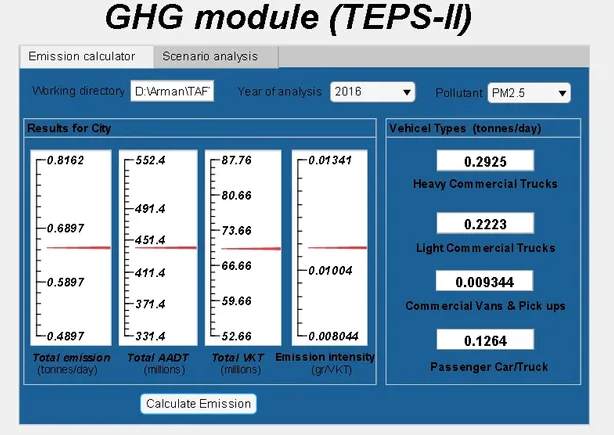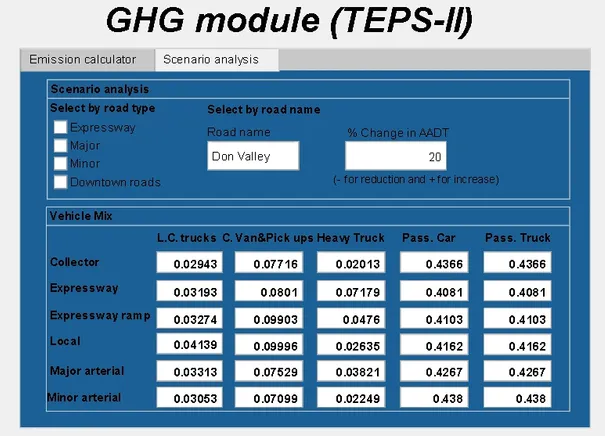Traffic Emission
Prediction Scheme (TEPs)
About Traffic Emission Prediction Scheme (TEPs)
- TEPs is a software application for predicting road traffic volume and on-road emissions in urban areas.
- TEPs uses traffic count data to predict periodic and annual volumes as well as GHG emissions at the level of each individual roadway for different years.
- TEPs outputs are automatically validated against observed traffic counts, demonstrating robust model performance.
- TEPs can be easily used to quantify the impact of different scenarios on on-road emission in urban areas.
- TEPs has parallel computing capability.
What makes TEPS different
Inner data trasnferability

A key for better prediction. TEPs feeds information from permanent monitoring sites to temporary sites for better traffic prediction
Prediction even with scarce data

TEPs uses a network-based interpolation technique to predict traffic volume for all roads, even for locations without monitoring sites
Generalizability

TEPs can be used at any location and scale with minimum data requirement
Make a spatial variability visible

TEPs generates maps of traffic volumes across an urban road network
Easy to use

TEPs has a very user friendly interface
Fast and Reliable

TEPs can predict 10 years of traffic volumes for all roads in a metropolitan area in a single day
Teps - i: A traffic module
TEPs-I is a chain of models for traffic volume and consists of six sub-models including novel spatio-temporal aggregation and disaggregation models, data pattern recognition, advanced interpolation, and machine learning methods. Models at the top of chain address stations that have long records of data, and feed information to lower level models.
A User Friendly Interface
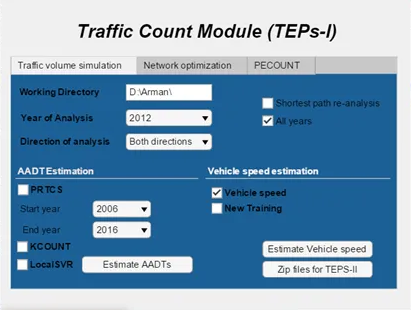
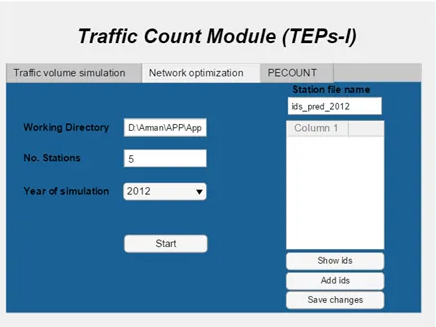
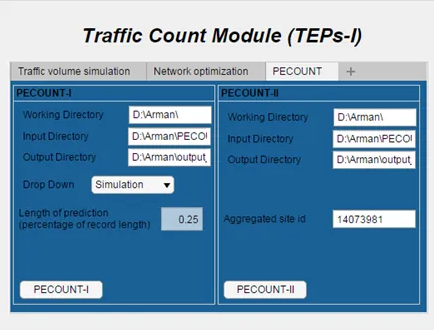
Teps - ii: scenario analysis
TEPs-II trains a Neural Network based learning algorithm to mimic the output of a user equilibrium traffic assignment model and to reproduce a relationship between vehicle speed and AADT. The trained model is then used to predict vehicle speed from TEPS-I. Road emissions are estimated based on average speeds, predicted volumes, and average-speed emission factors (EFs).
An interface with scenario analysis tools for GHG, NOx and PM2.5
